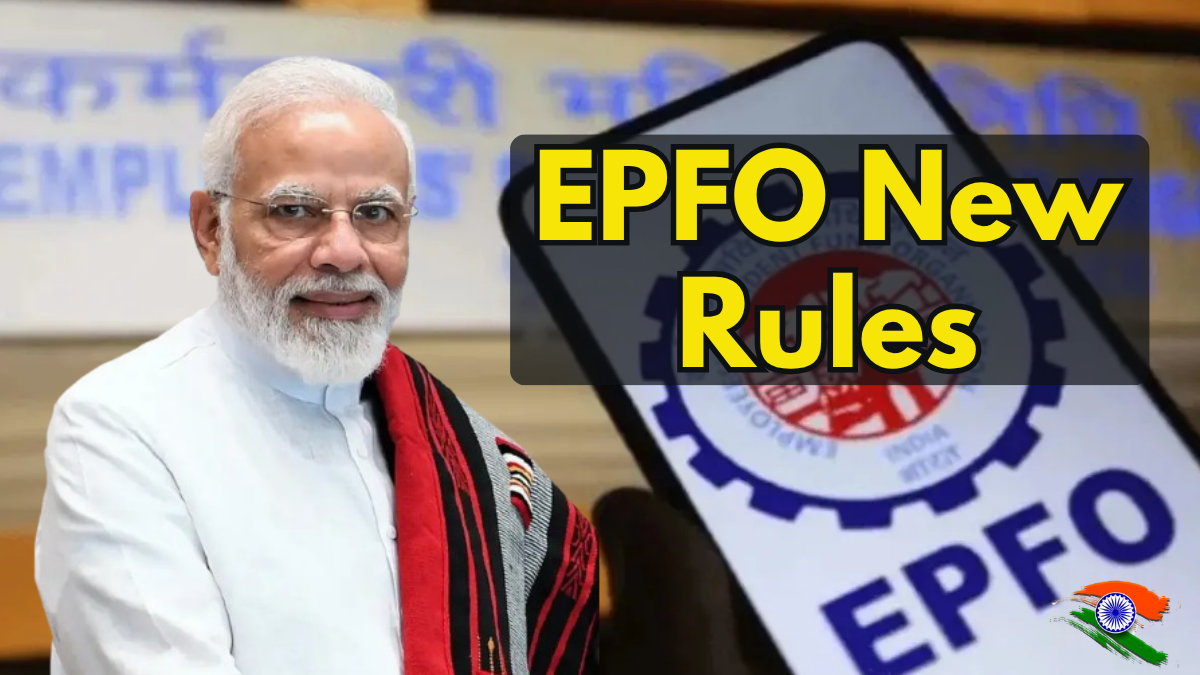The Employees’ Provident Fund Organisation is introducing a set of changes from November 2025 aimed at making social security coverage wider, faster, and simpler. The package combines an enrollment amnesty like window for workers missed between 2017 and 2025, a digital first push widely referred to as EPFO 3.0, and a more flexible approach to withdrawals and transfers. In effect, the changes are designed to reduce friction for both employers and employees while protecting the long term retirement corpus through guardrails.
Quick Summary
Item |
Details |
|---|---|
Rollout start |
1 November 2025 |
Core initiatives |
Employee Enrollment Scheme 2025, EPFO 3.0 digital upgrades |
Key advantages |
Easier re enrollment of missed workers, automatic PF transfers, Aadhaar based KYC, simplified withdrawals |
Interest rate (as mentioned) |
8.25 percent per annum for FY 2024 25, subject to credit timelines |
Penalty relief |
Nominal fine of ₹100 for eligible late registrations as stated in the update |
Who benefits |
Existing and newly enrolled EPF subscribers, eligible pensioners for Digital Life Certificates |
Official site |
Note: The following article rewrites and organizes the details shared in your draft. For final compliance and operational clarity, always verify with official EPFO notifications and circulars.
What Is Changing From November 2025
1) Employee Enrollment Scheme 2025
- Objective: Allow employers to bring back workers who were missed between 2017 and 2025.
- Penalty relief: A minimal penalty of ₹100 for past lapses as described, with no deduction of employee contributions for the period of non coverage in the stated scheme framework.
- Scope: Targets enterprises with 20 or more employees and covers salaried workers who should have been under EPF but were not enrolled.
2) EPFO 3.0 Digital Upgrades
- Automatic PF transfers: Balances shift to the new employer account when an employee changes jobs, reducing manual intervention.
- Aadhaar based KYC: A unified digital identity anchored in UAN to streamline services.
- Faster settlements: Claims up to a certain threshold, stated as ₹5 lakh in the draft, to be settled on the spot under defined safeguards.
- Pensioner services: Digital Life Certificate doorstep facility through IPPB support, free of charge per the draft language.
3) Interest Crediting And Compounding
- The draft notes an EPF interest rate of 8.25 percent for FY 2024 25, to be credited in due course. Unwithdrawn balances continue to compound.
Eligibility At A Glance
- Mandatory coverage: Salaried workers with basic pay up to ₹15,000 fall under mandatory EPF coverage.
- Enrollment window audience: Workers missed during 2017 to 2025 in eligible establishments can be brought on record by employers under the amnesty styled Enrollment 2025.
- KYC prerequisites: UAN linked with Aadhaar, PAN, and bank account to access the full set of digital services.
- Exclusions: NRIs and self employed persons are outside regular EPF coverage unless engaged as employees under eligible establishments.
- Pensioners: Family pensioners may use Digital Life Certificate services for verification.
Withdrawal, Transfer, And Security Rules
- Withdrawal scope: The draft indicates withdrawals for housing, medical, education, marriage, and other critical needs with flexibility up to 100 percent of the eligible amount under defined conditions.
- Corpus guardrail: A 25 percent minimum retention is described to keep the retirement nest egg compounding.
- Unemployment wait: A 12 month waiting period after separation is indicated for full settlement eligibility while interest accrues during the wait.
- Automatic transfers: With a KYC compliant UAN, PF transfer to the new employer account occurs automatically when switching jobs.
- Taxation pointer: Withdrawals above ₹50,000 may attract tax when service conditions are not met. Always confirm the latest income tax rules before making a claim.
Benefits And Impact
- For workers:
- Easier enrollment for those previously missed, protecting retirement savings.
- Liquidity when needed through calibrated withdrawals for life events and emergencies.
- Less paperwork thanks to automatic transfers and Aadhaar based KYC.
- Ongoing compounding at the stated interest rate on retained balances.
- For employers:
- Compliance reset at a nominal cost for past lapses under the scheme’s conditions.
- Simpler onboarding and exits with fewer manual PF transfer steps.
- Lower administrative friction through digital claims and verifications.
- For the economy:
- Broader formalization aligns with employment targets, including the stated Viksit Bharat Rozgar Yojana ambition of 35 million jobs over five years as mentioned in the draft.
- Higher participation in long term savings can deepen domestic capital pools.
Caution: Greater withdrawal flexibility can be helpful but may tempt over withdrawals. The 25 percent retention concept in your draft is intended to preserve long term security. Consider budgeting rules so short term needs do not compromise retirement adequacy.
How To Prepare As A Subscriber
- Verify KYC: Ensure Aadhaar, PAN, and bank details are correctly linked to your UAN on the member portal.
- Check service history: Confirm past and current employments are mapped to your UAN and that transfers have completed.
- Assess emergency buffers: Decide how much liquidity you need vs how much to keep compounding for retirement.
- Track official updates: Follow EPFO circulars for detailed eligibility, forms, and timelines as implementations progress.
Official Website
- EPFO portal for members, employers, and pensioners: https://www.epfindia.gov.in
- Use the Member e Seva and Employer e Seva sections for KYC, claims, transfers, and enrollment actions.
Frequently Asked Questions
1) When do the new rules start applying
From 1 November 2025, with staged rollouts for specific features as announced through EPFO circulars.
2) What is the main benefit of the Employee Enrollment Scheme 2025 for missed workers
It gives eligible employers a route to regularize missed coverage between 2017 and 2025 with a ₹100 nominal penalty per the draft, while not docking employee contributions for the lapse period under the scheme’s terms.
3) Will my PF transfer happen automatically when I switch jobs
Under the EPFO 3.0 approach described, yes. If your UAN is KYC compliant, the balance moves to your new account automatically after your new employer links your UAN.
4) Can I withdraw 100 percent of my PF balance
The draft describes high flexibility for defined needs, along with a 25 percent retention concept to protect retirement savings. Review the final EPFO circulars for exact categories, limits, and documentation.
5) What interest rate applies to my EPF for FY 2024 25
Your draft notes 8.25 percent. Interest crediting occurs after notified processes conclude. Check your passbook periodically on the Member e Seva portal.
Conclusion
The EPFO changes from November 2025 aim to expand formal coverage, cut red tape, and protect long term savings while offering practical liquidity. The Enrollment Scheme 2025 helps employers correct past omissions at minimal cost, and EPFO 3.0 promises faster digital services with automatic transfers and Aadhaar anchored KYC. For subscribers, the key is to keep UAN KYC in order, understand the withdrawal options responsibly, and maximize compounding on the retained corpus. Always cross check the latest EPFO notifications so your actions align with the final rules and timelines.
For More Information Click HERE












